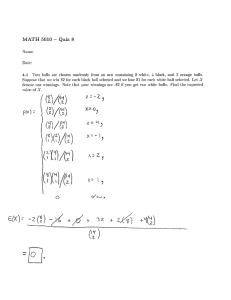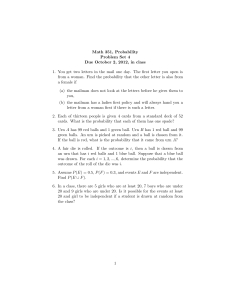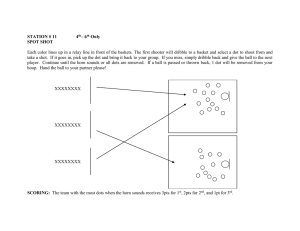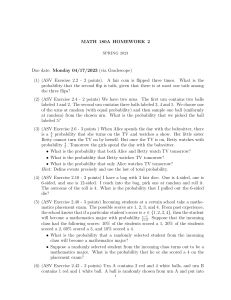Massachusetts Institute of Technology
advertisement
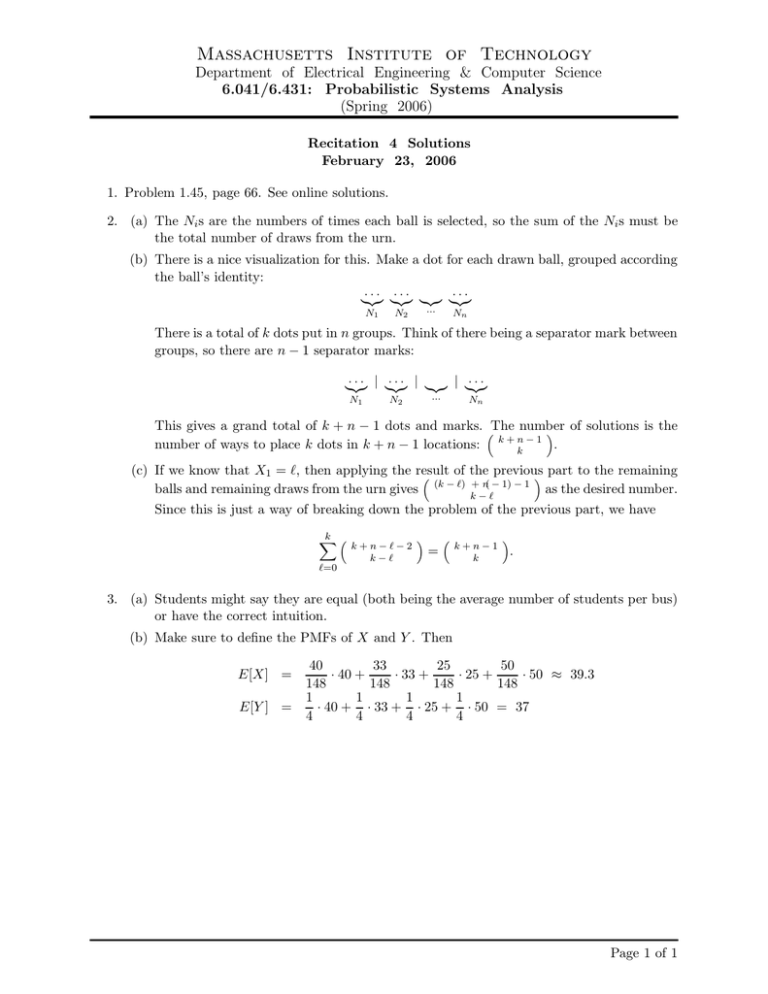
Massachusetts Institute of Technology Department of Electrical Engineering & Computer Science 6.041/6.431: Probabilistic Systems Analysis (Spring 2006) Recitation 4 Solutions February 23, 2006 1. Problem 1.45, page 66. See online solutions. 2. (a) The Ni s are the numbers of times each ball is selected, so the sum of the Ni s must be the total number of draws from the urn. (b) There is a nice visualization for this. Make a dot for each drawn ball, grouped according the ball’s identity: · · · ���� · · · ���� ���� ··· ���� N1 N2 Nn ··· There is a total of k dots put in n groups. Think of there being a separator mark between groups, so there are n − 1 separator marks: · · · | ���� · · · | ���� | ���� ··· ���� N1 N2 Nn ··· This gives a grand total of k + n − 1 dots and marks. �The number � of solutions is the k+n−1 number of ways to place k dots in k + n − 1 locations: . k (c) If we know that X1 = ℓ, then applying the result of the previous � � part to the remaining (k − ℓ) + n( − 1) − 1 balls and remaining draws from the urn gives as the desired number. k−ℓ Since this is just a way of breaking down the problem of the previous part, we have k � � ℓ=0 k+n−ℓ−2 k−ℓ � = � k+n−1 k � . 3. (a) Students might say they are equal (both being the average number of students per bus) or have the correct intuition. (b) Make sure to define the PMFs of X and Y . Then E[X] = E[Y ] = 40 33 25 50 · 40 + · 33 + · 25 + · 50 ≈ 39.3 148 148 148 148 1 1 1 1 · 40 + · 33 + · 25 + · 50 = 37 4 4 4 4 Page 1 of 1

